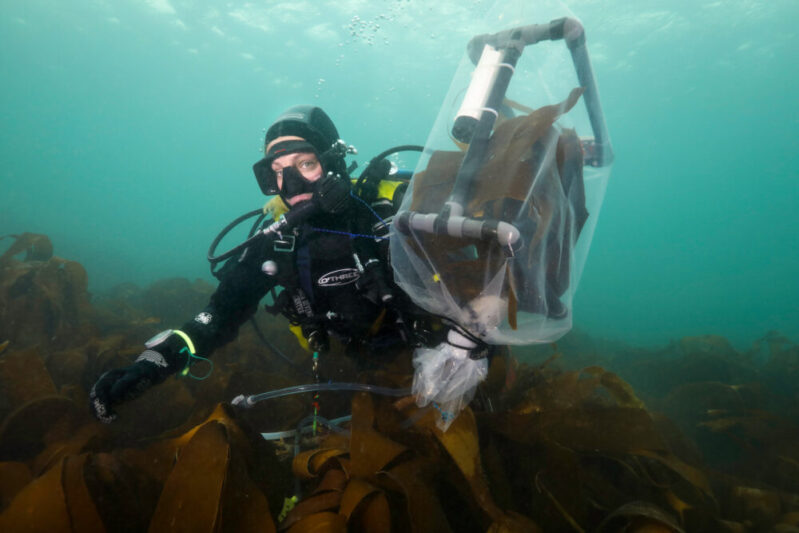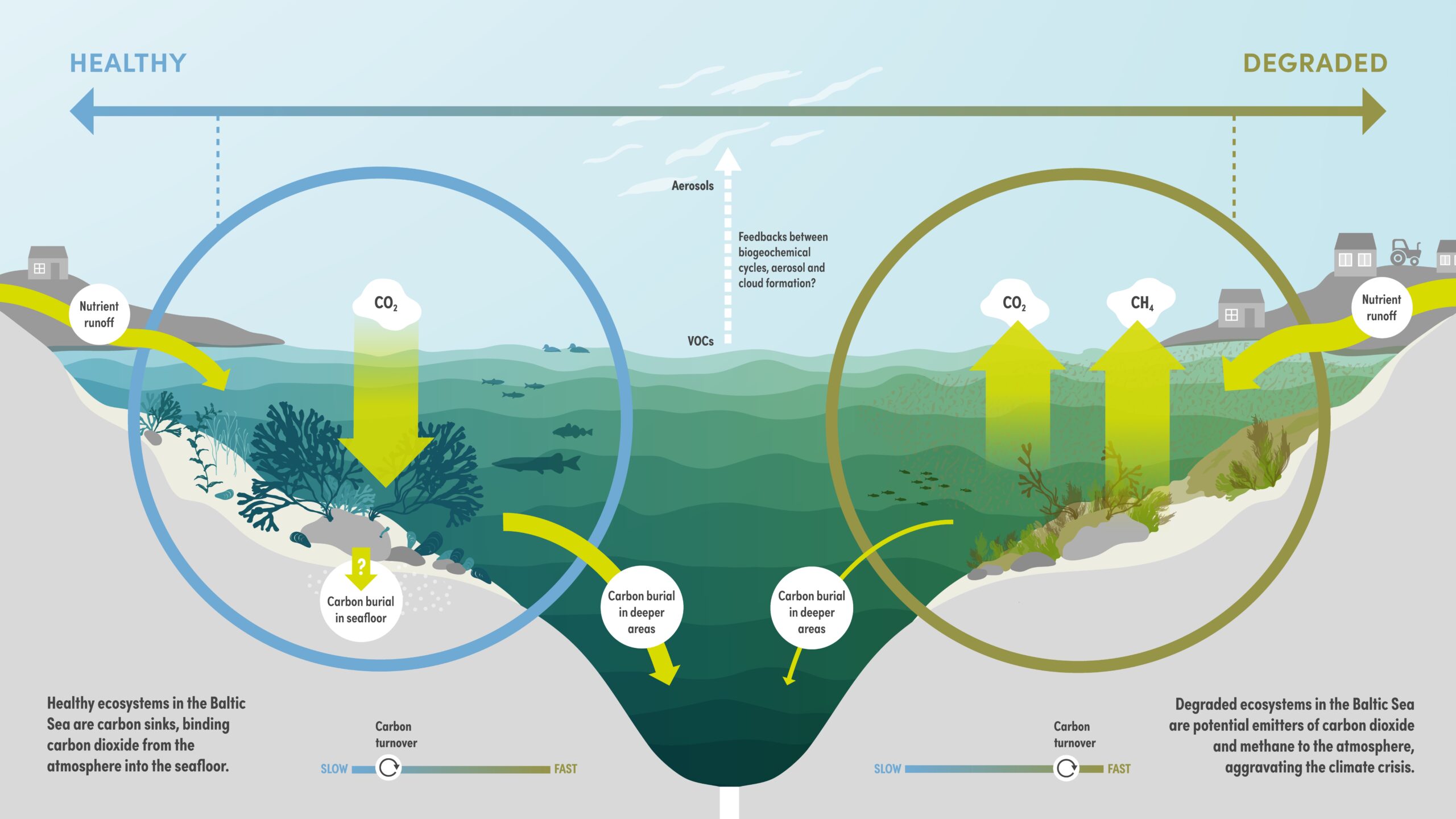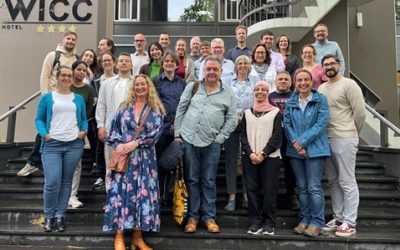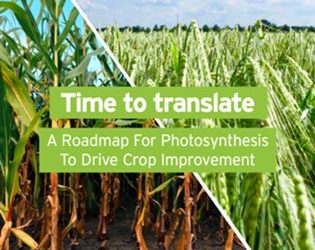
W. Thomas, SBR, CNRS-Sorbonne Université
Understanding the effects of global warming, harvesting and land-use changes for local carbon fluxes is crucial for managing global emission scenarios. The flows of carbon between different organisms, their metabolic fluxes (i.e. photosynthesis, respiration) and gaseous exchange across land/water/atmospheric interfaces determines whether specific habitats absorb or emit greenhouse gases (Fig 1, source: https://www.coastclim.org/). Photosynthesis, specifically the rate of CO2 uptake, is increasingly used as a tool to infer consequences of global environmental change, or ecosystem degradation, for ecosystem functioning and net carbon balance. Various methods have been developed across the globe, including eddy flux covariance (Attard et al 2019), photorespirometry chambers (White et al 2021) and community carbon balance (Newell & Field, 1983), within both terrestrial and aquatic realms to estimate net community-integrated productivity, and ultimately carbon sequestration potential (Gallagher et al 2022). Net photosynthetic output, alongside estimates of carbon burial, allow ecosystems’ capacity to mitigate CO2 emissions to be compared under different global change scenarios and between different habitats. Furthermore, these robust assertions of carbon sequestration and mitigation potential are essential when considering carbon credit offset and trade schemes (Repetto, 2013; Johannessen and Macdonald, 2016).

CoastClim project website https://www.coastclim.org/
References
Attard, K.M., Rodil, I.F., Glud, R.N., Berg, P., Norkko, J. and Norkko, A. (2019), Seasonal ecosystem metabolism across shallow benthic habitats measured by aquatic eddy covariance. Limnol Oceanogr Lett, 4: 79-86. https://doi.org/10.1002/lol2.10107
White, L., Loisel, S., Sevin, L. and Davoult, D. (2021), In situ estimates of kelp forest productivity in macro-tidal environments. Limnol Oceanogr, 66: 4227-4239. https://doi.org/10.1002/lno.11955
Newell R., Field J.1983. The contribution of bacteria and detritus to carbon and nitrogen flow in a benthic community. Marine Biology Letters, 4: 23–36.
Gallagher, J. B., Shelamoff, V., & Layton, C. (2022). Seaweed ecosystems may not mitigate CO2 emissions. ICES Journal of Marine Science, 79: 585-592.
Repetto R. 2013. Cap and trade contains global warming better than a carbon tax. Challenge, 56: 31–61.
Johannessen S. C., Macdonald R. W. 2016. Geoengineering with seagrasses: is credit due where credit is given? Environmental Research Letters, 11: 113001.


